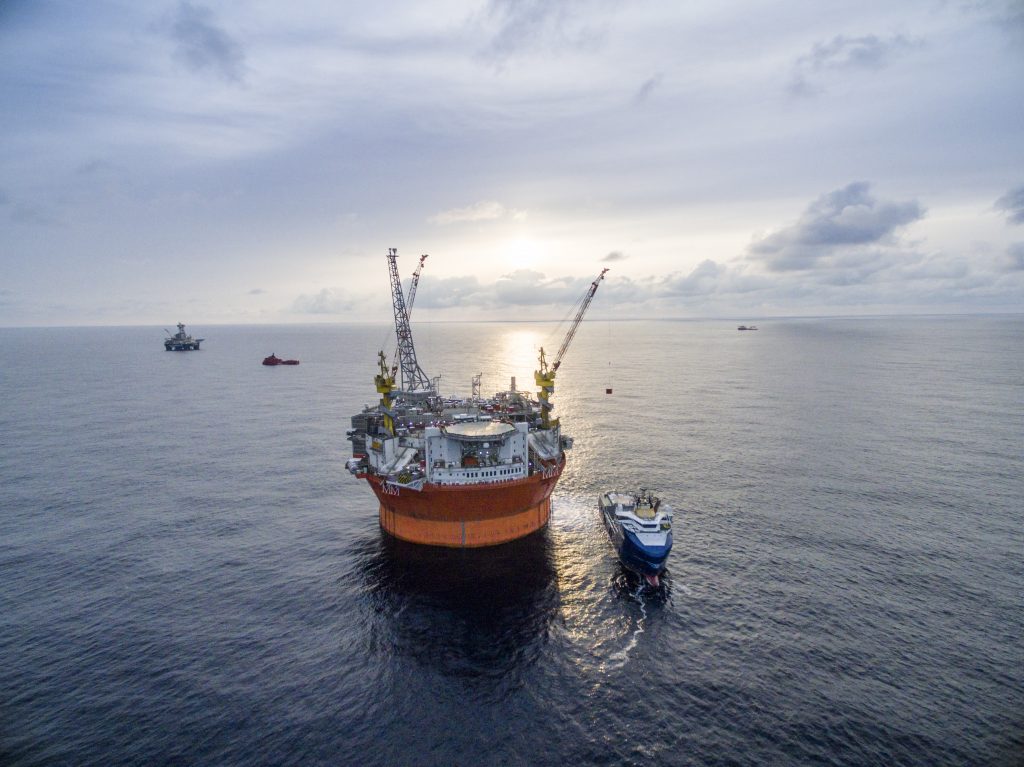The future of Norway’s oil industry lies in the Barents Sea—but it’s far from certain
The most recent assessment by Norway's oil regulator suggests that major new finds and production in the nationa's Arctic will be necessary to keep production at current levels in the next decade.

Norway’s oil and gas industry has three things going for it right now: oil prices have doubled over the past two years, production remains high and, perhaps most importantly, there is much left to discover, particularly in the Barents Sea.
Nevertheless, Bente Nyland, the director general of the NPD, the national regulator, is concerned. Presenting ‘The Shelf‘, her outfit’s annual state of the industry, she warned yesterday that, despite forecasts that production could reach record levels by 2023, current investment is too low to sustain growth much beyond that. Likewise, a lack of profitable finds in the Barents, estimated to hold two-thirds of Norway’s undiscovered resources, jeopardizes the industry’s outlook going ahead.
“If production is to be maintained at a high level beyond 2025, more profitable resources must be proven, including in major discoveries,” she said.
For now, Nyland can reassure onlookers with a palette of good statistics. For example, 2017 was the fourth year running that overall oil and gas production increased. And, with 19 new projects in the works, the trend is likely to continue over the next five years.
Another bit of good news: half of the 34 exploration wells that were completed in 2017 were in the Barents Sea. The same number is expected in 2018 – but it is here that the problems begin to stack up: exploration was already at its lowest level in a decade last year, and, in the Barents, the number of drills will likely decline. This is bad news, given that its oil, according to Nyland, will be “important in maintaining high production over the longer term”.
Another problem is that the number of discoveries fell to 11 last year, seven fewer than in 2016, and that all of them were relatively minor. Some, though, could turn out to be profitable if they can be linked to fields currently in operation, eliminating the need to have to install costly drilling infrastructure.
But even if that happens, oil from the Barents will remain crucial to keeping the industry afloat. This became even more apparent in 2017 when the NPD updated its estimates for the Barents’ share of Norway’s undiscovered resources. While the estimates for the North and Norwegian seas remained unchanged, the Barents was found to have 80% more oil than the 2015 estimate concluded.
All of this promise makes the lack major finds in the Barents all the more glaring. Three notable finds – Snøhvit, Johan Castberg and Goliat – have been made, but all have hit snags in one form or another, and none are of the size that drillers are accustomed to from the North Sea, where deposits containing billions of barrels of oil or the equivalent in gas have been standard. In the Barents, good discoveries are turning out to be those that have hundreds of millions of barrels.
Another worry is that few new firms appear to be interested in testing the waters of the Barents. The most recent licensing round, in December, saw just 11 bidders for the 100 or so exploration areas being opened later this year. Twice as many companies bid for licenses in the previous round, in 2015, when 57 blocks were offered.
The bright side is that most of the firms bidding this time are already active in the area, underscoring that, while lack of success may be breeding lack of interest industry-wide, those that are in the Barents continue to believe it will pay off eventually.
The timeline for the development of Snøhvit explains why Nyland frets eventually may be too late: discovered in 1984, development of the field did not begin until 2001, with production coming online in 2006.